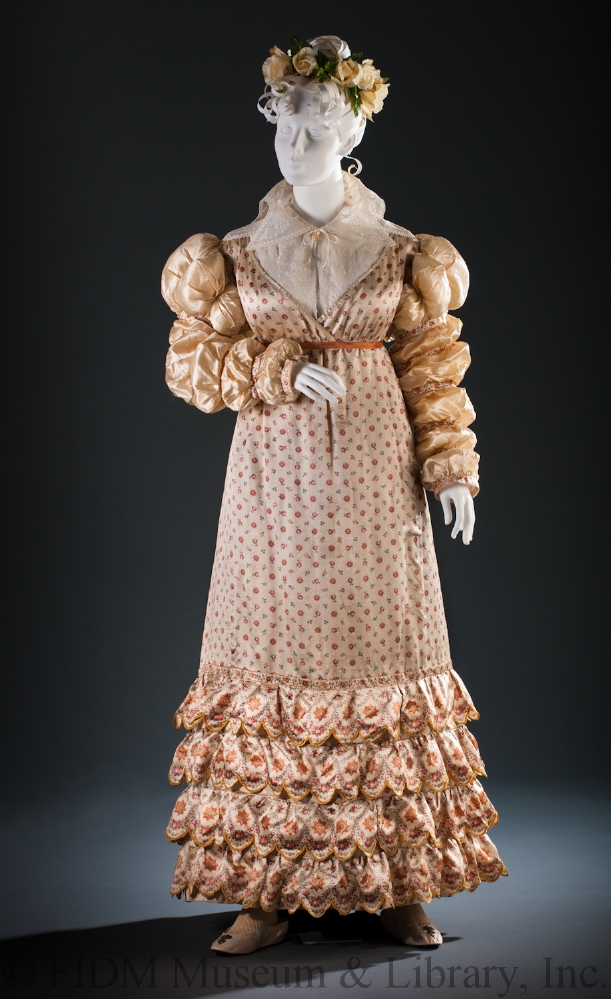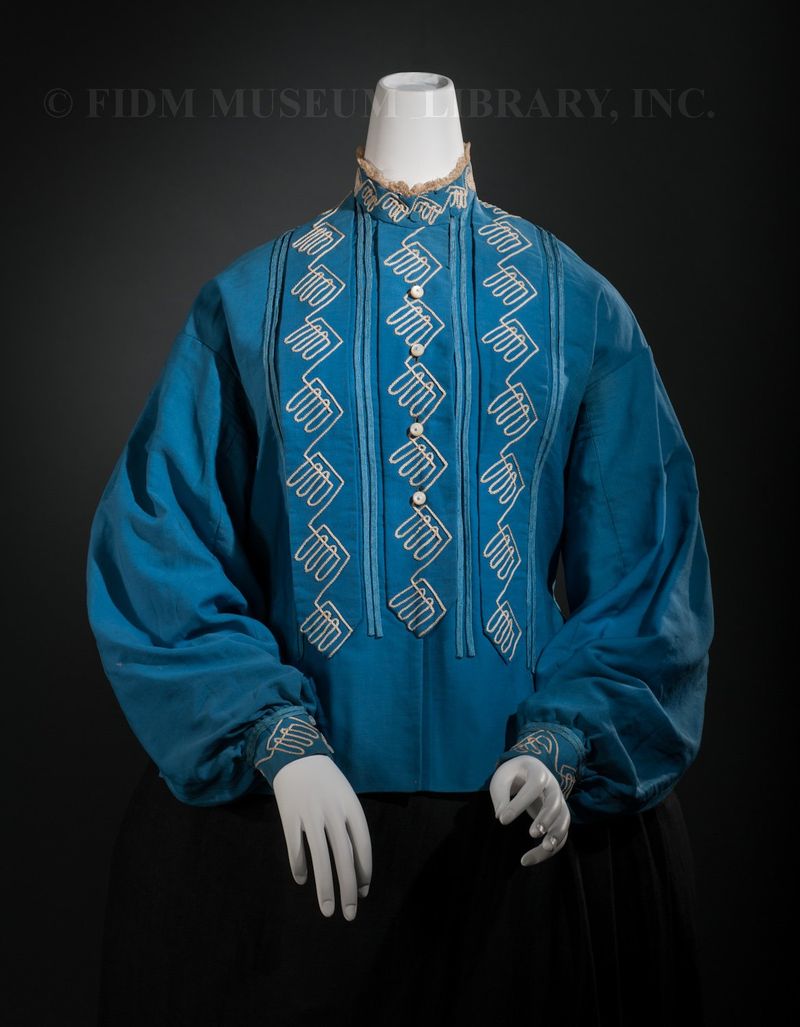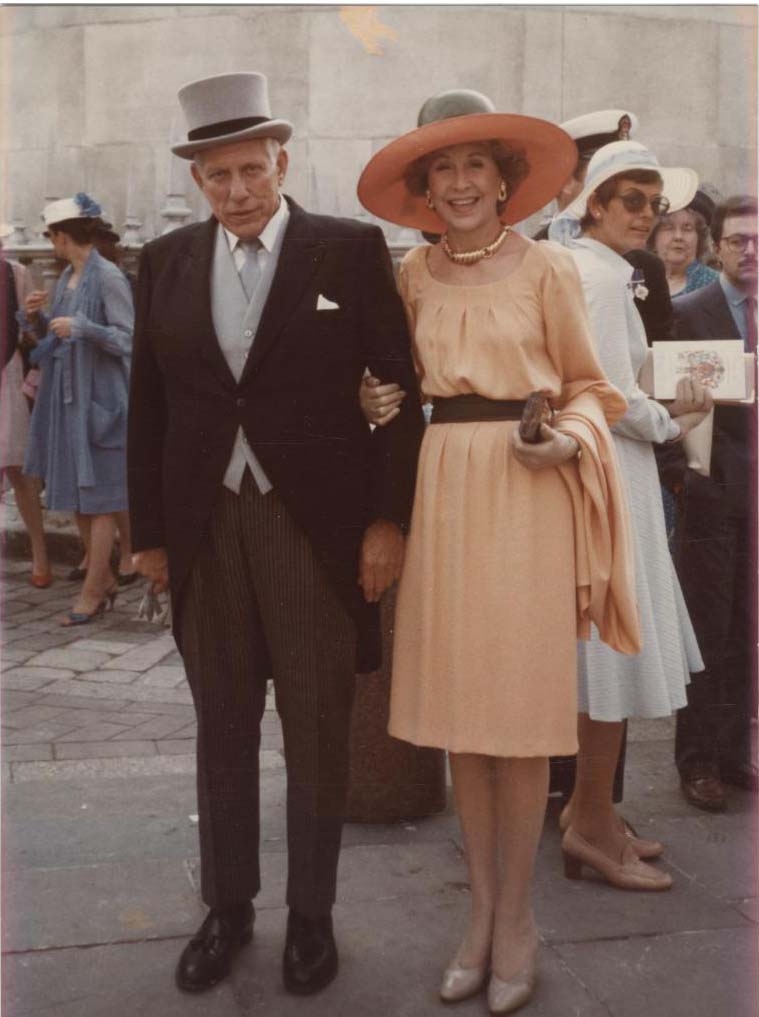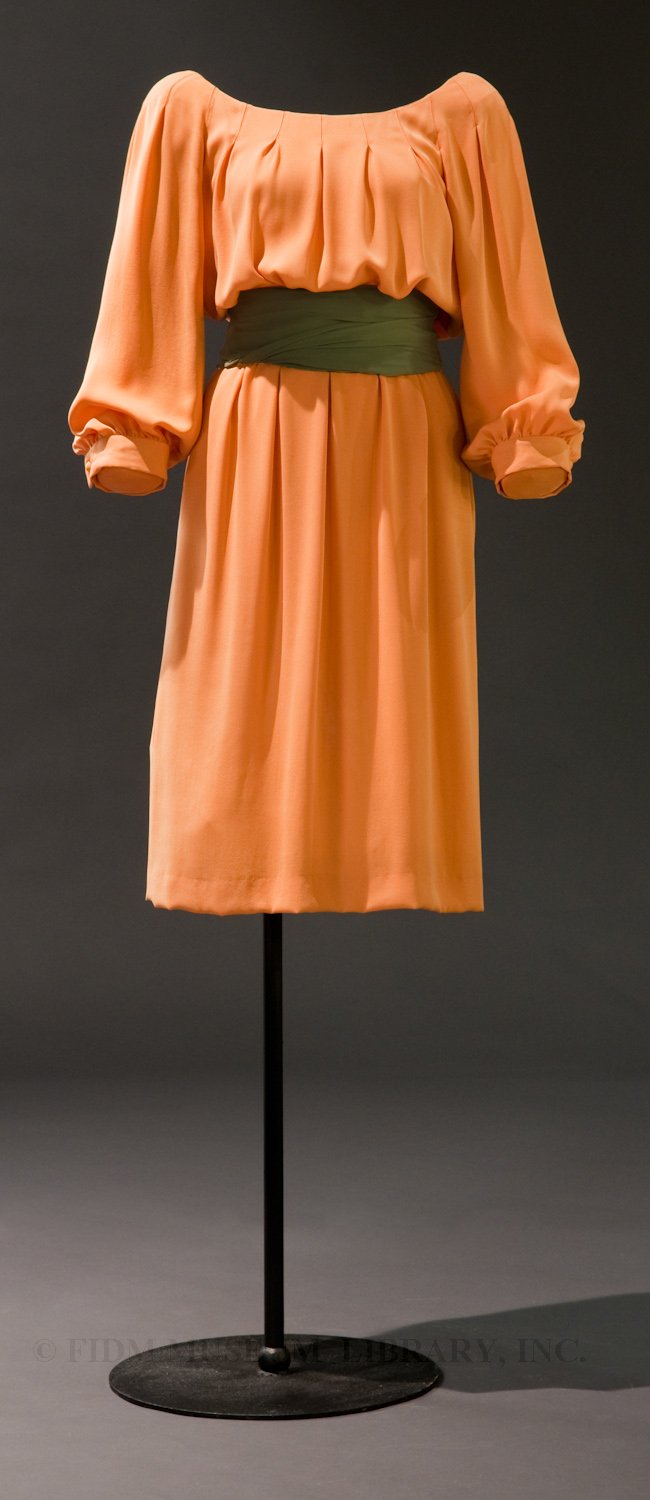Royal Wedding Week Recap
Did you follow along with our Royal Wedding Week celebrations? Every day last week leading up to the spectacular wedding of Prince Harry and Ms. Meghan Markle (who hails from our very own Los Angeles), we shared an object in the FIDM Museum Collection with royal provenance on our social media platforms. We are proud that our Museum holds one of the largest collections of royal dress in the country, and it's important to us to share these precious objects with our community! Don't worry if you missed a day; we're recapping the week for you below. You also have a chance to see three pieces from our royal collection in person: our Acquiring Beauty exhibition includes a cloth of gold bodice worn to the coronation of King George III in 1761, as well as Queen Victoria's beaded skirt panel worn during her 1887 Golden Jubilee. Capturing the Catwalk: Runway Photographs from the Michel Arnaud Archive, opening May 24, will also have a royal connection: the exhibition features a dress worn to Prince Charles and Lady Diana Spencer's 1981 wedding. Congratulations to the new Duke and Duchess of Sussex!
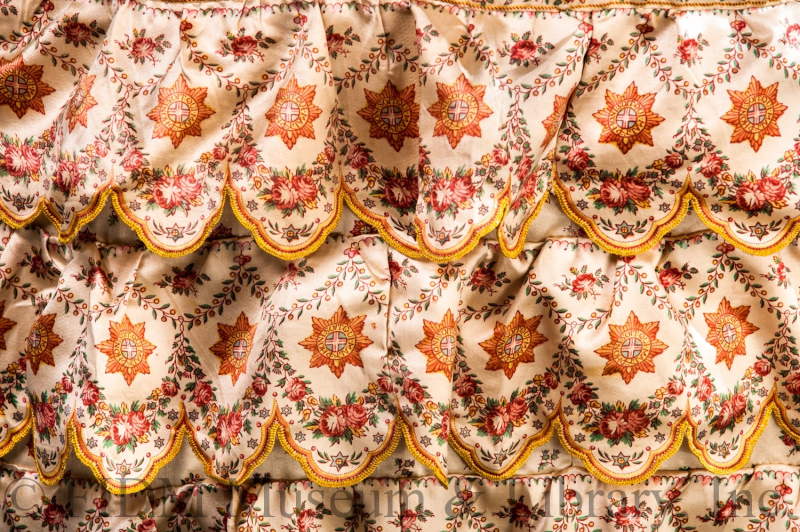 Printed silk gown worn by Princess Charlotte 1816-1817 Helen Larson Historic Fashion Collection FIDM Museum Purchase: Funds raised by the FIDM Museum Fashion Council [2011-2015] and other generous donors, 2017.5.40
Printed silk gown worn by Princess Charlotte 1816-1817 Helen Larson Historic Fashion Collection FIDM Museum Purchase: Funds raised by the FIDM Museum Fashion Council [2011-2015] and other generous donors, 2017.5.40
To begin our royal journey, the extremely rare ‘Star of the Order of the Garter’ Dress, 1816-17, worn by Princess Charlotte of Wales. Charlotte, the only child of King George IV and Caroline of Brunswick, wore this printed silk gown full of symbolic royal imagery: roses (for England), shamrocks (Ireland), thistle (Scotland), myrtle and acorns (marital flora), as well as multiple ‘Star of the Order of the Garter’ badges – an order of chivalry founded in 1348 by King Edward III, and dedicated to Saint George, England’s patron saint. Curator Kevin Jones traced the ownership of the dress to members of Princess Charlotte’s household, making it one of only a handful of garments known to be worn by this popular princess.
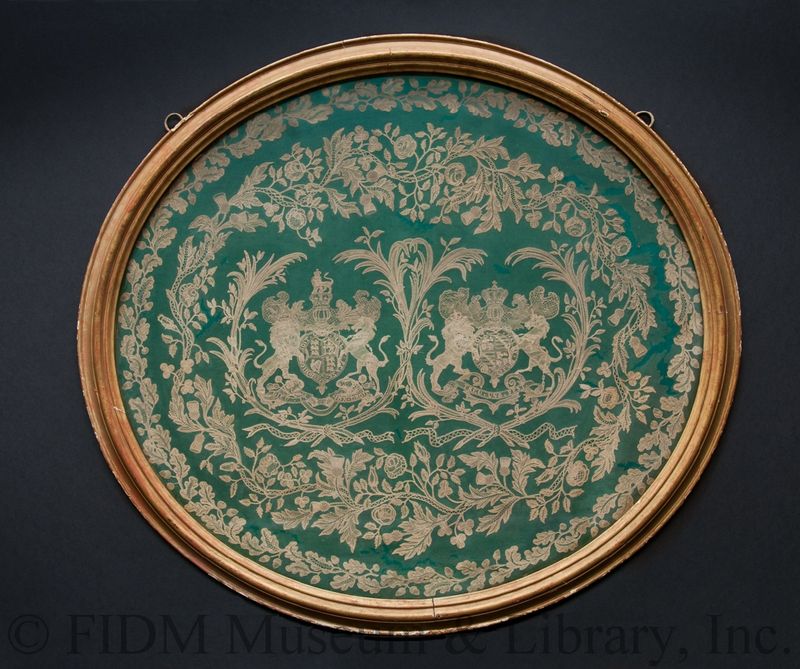
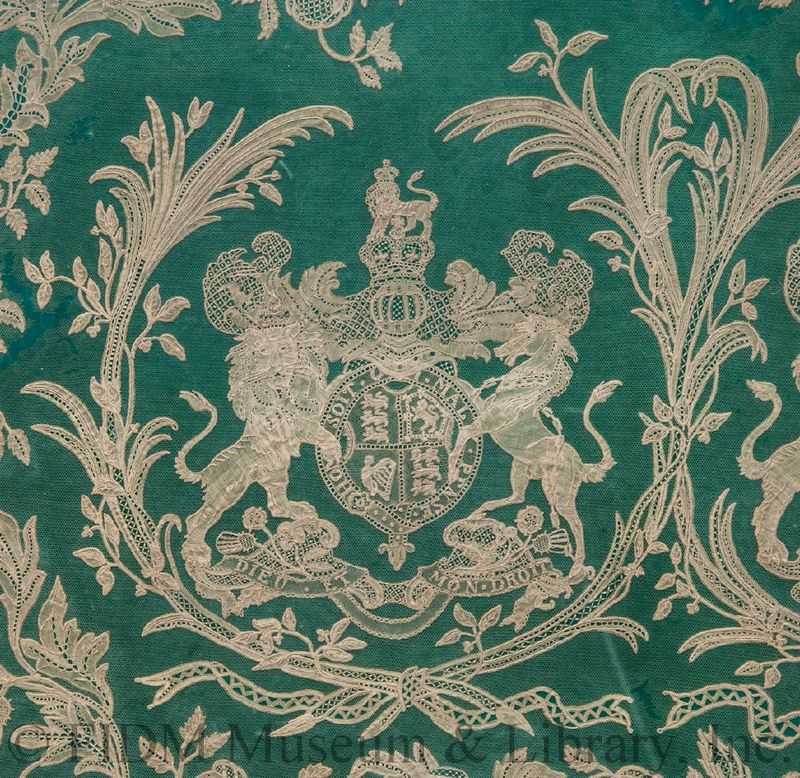 Honiton lace panel 1851 Helen Larson Historic Fashion Collection FIDM Museum Purchase: Funds generously donated by Mona Lee Nesseth and Deborah L. Veady, 2015.5.45
Honiton lace panel 1851 Helen Larson Historic Fashion Collection FIDM Museum Purchase: Funds generously donated by Mona Lee Nesseth and Deborah L. Veady, 2015.5.45
This 19th Century lace roundel unites the coats of arms of Queen Victoria and her beloved husband, Prince Albert. Tudor roses for England, thistles for Scotland, and shamrocks for Ireland--as well as majestic oak leaves, acorns, and palm and olive branches--surround the coats of arms, all backed by a piece of green silk satin and ensconced in a gilded oak frame. The ornate scrollwork and natural motifs are characteristic of Honiton lace, a bobbin lace first produced in Devon in the seventeenth century and used for Queen Victoria's 1840 wedding dress and veil. Research by our curators established that this lace roundel was designed for the 1851 London Great Exhibition by T. Sharp and manufactured by John Tucker, who employed more than 500 lacemakers in Branscombe, East Devon.
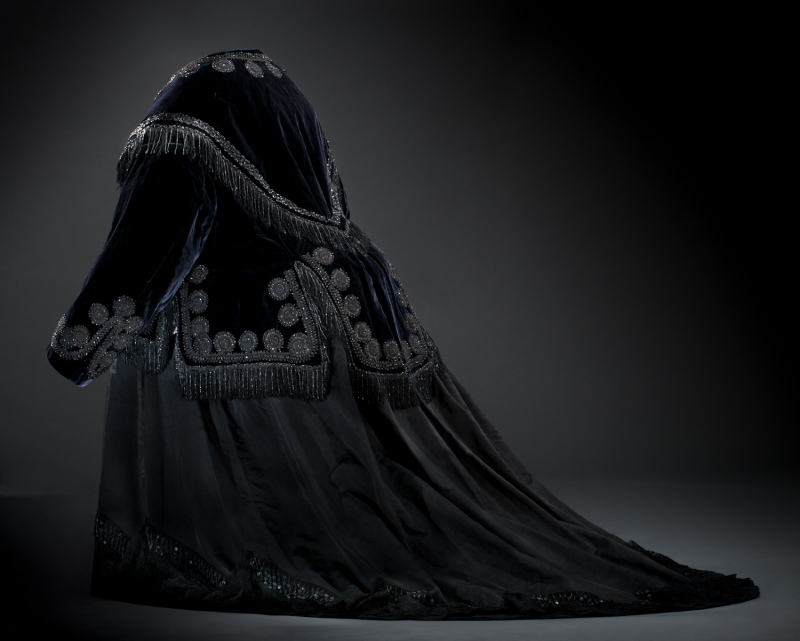 Black velvet dolman worn by Queen Victoria c. 1885 Helen Larson Historic Fashion Collection FIDM Museum Purchase: Funds generously donated by The Costumer's Guild West, Inc., 2018.5.40
Black velvet dolman worn by Queen Victoria c. 1885 Helen Larson Historic Fashion Collection FIDM Museum Purchase: Funds generously donated by The Costumer's Guild West, Inc., 2018.5.40
This distinctive silhouette could only belong to an elderly Queen Victoria, "the widow of Windsor." When her beloved Prince Albert died in 1861, the heartbroken Queen went into mourning for the rest of her life. Here, she wears a c. 1885 velvet dolman with jet trim, appropriate for later stages of mourning. In the late 19th century, a dolman--from the Turkish word for "robe"--was a loose, front-fastening overgarment, resembling a cape with voluminous sleeves. Often decorated with military-style fringe, braid, and soutache, the dolman was the perfect cold-weather companion.
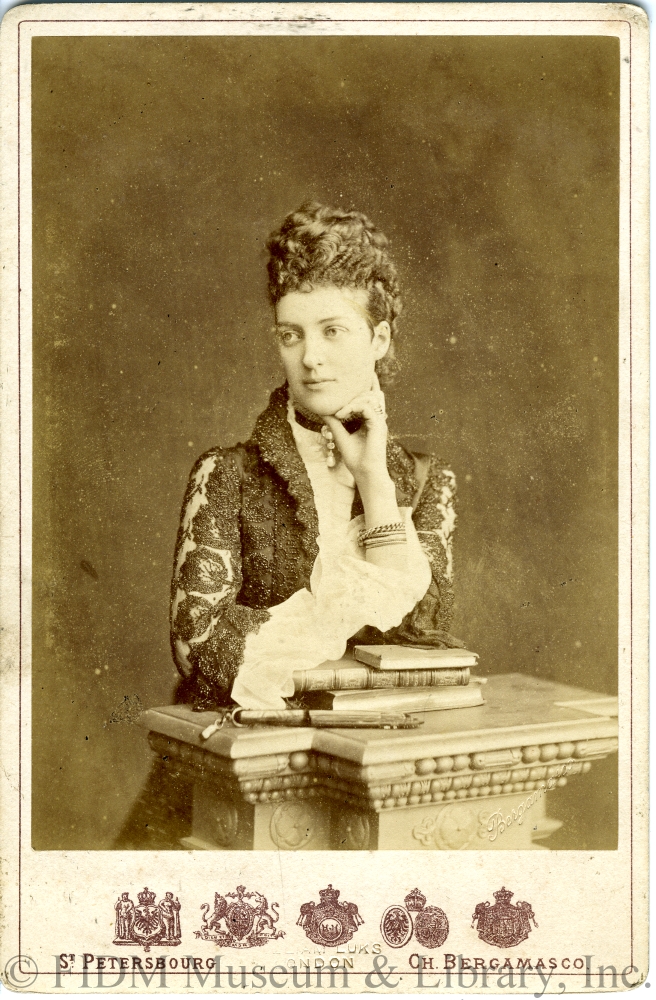 Cabinet card of Princess Alexandra (later Queen Alexandra) c. 1880 Gift of Oksana Zussman, SC2017.1567.4
Cabinet card of Princess Alexandra (later Queen Alexandra) c. 1880 Gift of Oksana Zussman, SC2017.1567.4
There are a plethora of photographs and paintings that showcase the legendary beauty and elegance of Alexandra, Princess of Wales – later Queen Alexandra. She became a sartorial trendsetter with her high fashion ensembles; she frequented French couture establishments, but the British house of Redfern (known for their crisp tailor-mades) was also a favorite. This cabinet card, c. 1880, shows the then-Princess wearing one of her signature accessories: a choker necklace, worn to cover a scar from a childhood illness.
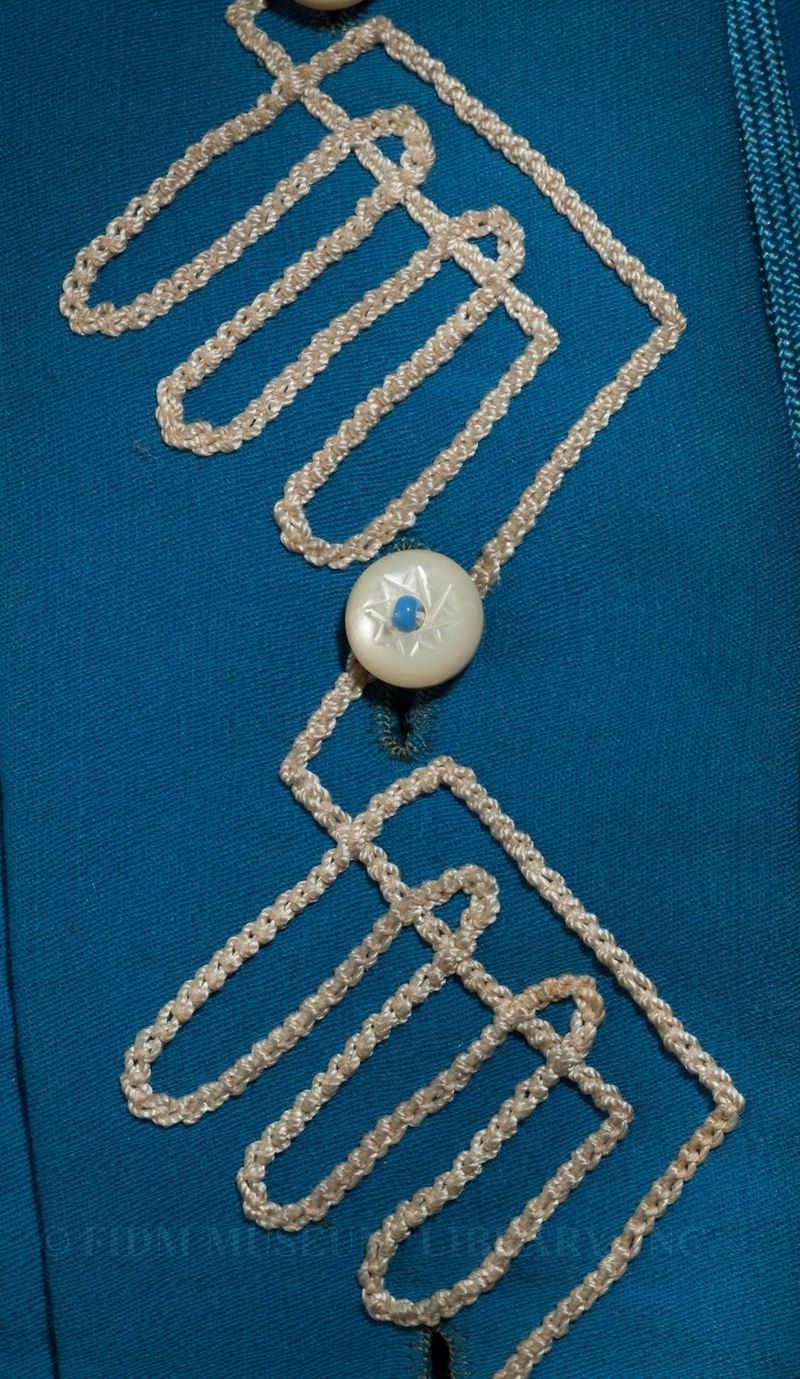 Wool blouse with mother-of-pearl buttons worn by Princess Alexandra (later Queen Alexandra) 1862-1863 Helen Larson Historic Fashion Collection FIDM Museum Purchase, 2018.5.14
Wool blouse with mother-of-pearl buttons worn by Princess Alexandra (later Queen Alexandra) 1862-1863 Helen Larson Historic Fashion Collection FIDM Museum Purchase, 2018.5.14
Something blue for the bride: Queen Alexandra's wool blouse with appliqued braid and mother-of-pearl buttons! This cheerful blouse was worn by the fashionable royal while Princess of Wales; research shows it was likely purchased for her trousseau prior to her 1863 wedding to Prince Edward.
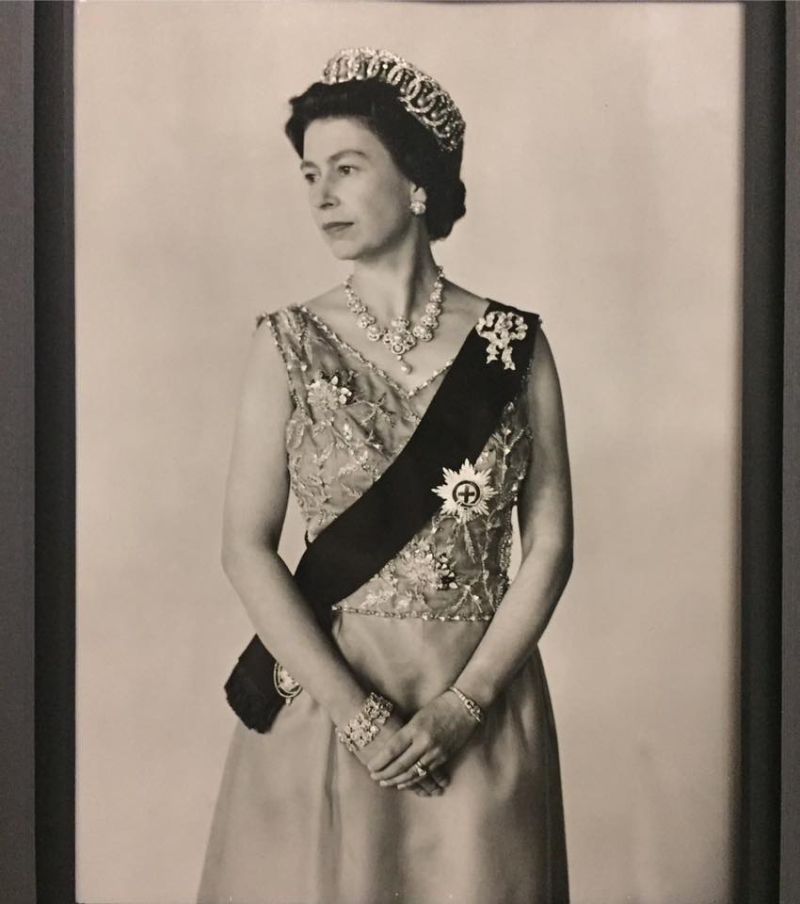 Cecil Beaton portrait of Queen Elizabeth II Gift of Joan Beer Damask and Donald Damask, SC2013.1250.30
Cecil Beaton portrait of Queen Elizabeth II Gift of Joan Beer Damask and Donald Damask, SC2013.1250.30
To celebrate the day of the wedding, we shared this Cecil Beaton pensive portrait of the Grandmother of the Groom, Her Majesty Queen Elizabeth.
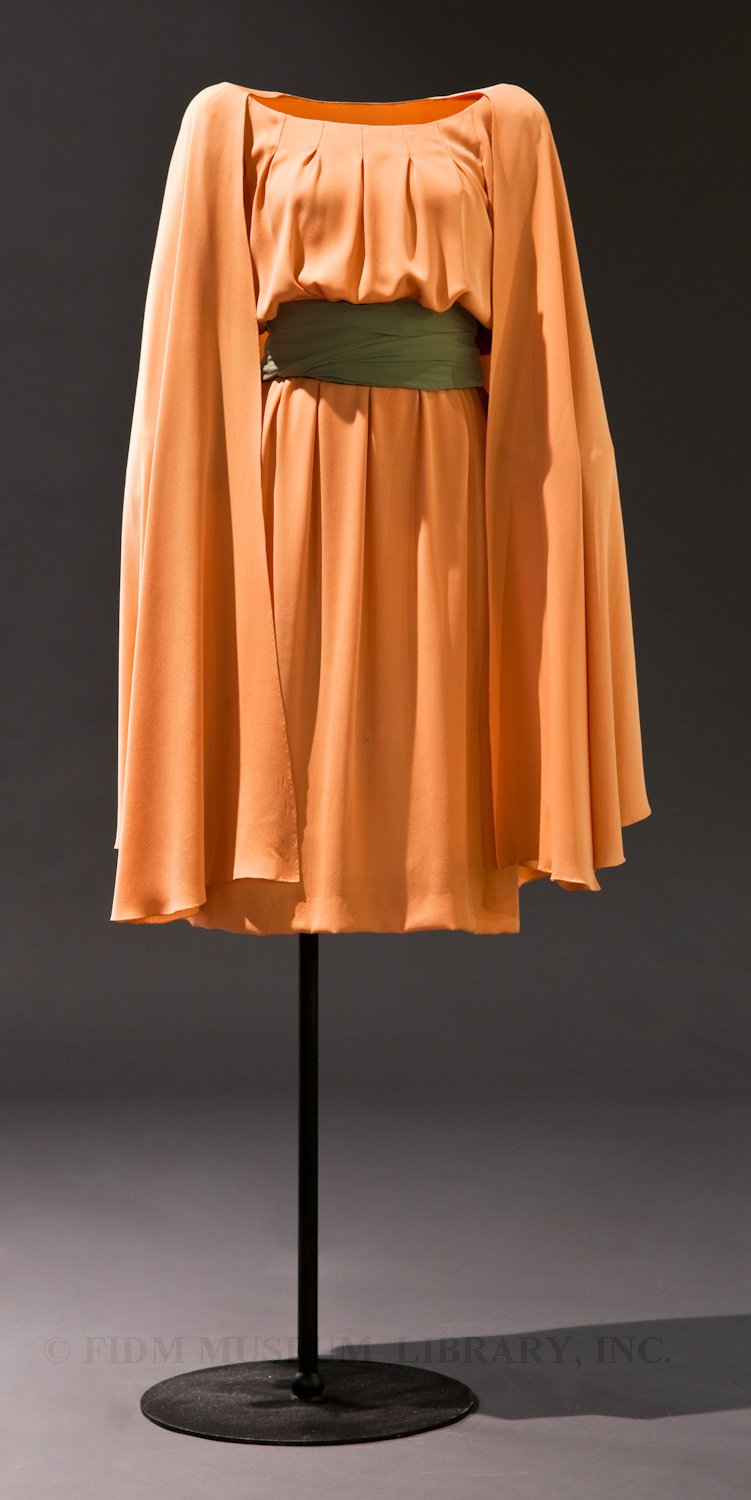 Silk crepe day ensemble Marc Bohan for Christian Dior Spring/Summer 1981 Gift of Mrs. Alfred Bloomingdale, 2006.116.78A-C
Silk crepe day ensemble Marc Bohan for Christian Dior Spring/Summer 1981 Gift of Mrs. Alfred Bloomingdale, 2006.116.78A-C
Bonus object! Betsy Bloomingdale, long-time donor to the FIDM Museum, wore the above silk crepe Marc Bohan for Dior dress to the July 29, 1981 nuptials of Prince Charles and Lady Diana Spencer. Mrs. Bloomingdale accessorized her look with a matching cape and wide-brimmed straw hat. Betsy and Alfred Bloomingdale were invited to attend the ceremony by Diana's stepmother Raine, Countess Spencer. The couple traveled to London on Air Force One with Betsy's good friend, First Lady Nancy Reagan. Coincidentally, she inadvertently matched her travel companion on the day of the wedding: Mrs. Reagan wore a similar pale pink silk chiffon ensemble designed by James Galanos.
